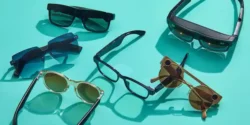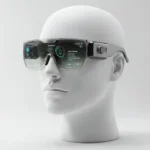The Potential Transition from Smartwatches to Smart Glasses
For years, smartwatches have been our go-to wearable companions, shrinking our digital lives onto our wrists, offering quick access to notifications, fitness tracking, and basic controls. But as technology leaps forward, a new form factor – Smartwatches to Smart Glasses – is emerging that could fundamentally change how we interact with information and the world around us: smart glasses. While still in their nascent stages for the consumer market, smart glasses hold the promise of a more integrated, intuitive, and heads-up computing experience, potentially signaling a shift in our preferred wearable technology. Will smart glasses replace smartwatches?
Smartwatches have carved out a significant niche by offering convenience and glanceable information. Their strengths lie in their discretion, ease of access for quick alerts, and robust health and fitness tracking capabilities. They’re excellent for managing notifications without pulling out your phone, tracking workouts, and even making contactless payments. Their limitations, however, become apparent when trying to interact with more complex information, view detailed visuals, or engage in tasks that require a larger display or hands-free operation. The small screen size can be restrictive, and interacting with apps can feel cumbersome.
Enter Smart Glasses
While the concept isn’t new (think Google Glass), recent advancements in display technology, miniaturization, AI, and connectivity (like 5G) are bringing us closer to a future where stylish and functional smart glasses are a reality. Unlike smartwatches that pull information from your phone to your wrist, smart glasses aim to overlay digital information onto your view of the physical world or provide an immersive display experience directly in your line of sight. The transition from smartwatches to smart glasses seems like a natural occurrence.
The potential advantages of smart glasses are compelling. Imagine receiving navigation directions superimposed on the road ahead, identifying plants or objects with a glance, accessing contextual information about your surroundings, or having a teleprompter for presentations that only you can see. For professionals, smart glasses offer hands-free access to data, remote assistance capabilities, and enhanced training simulations, particularly in fields like manufacturing, healthcare, and logistics. The ability to interact with information more naturally, using voice commands, gestures, or subtle head movements, could offer a more seamless and less disruptive computing experience compared to glancing at a watch or pulling out a phone.
Smartwatches to Smart Glasses Challenges
However, the path to widespread smart glass adoption is not without its hurdles. Can smart glasses replace smartwatches? Several challenges need to be addressed before they can truly compete with, or even replace, the ubiquitous smartwatch.
- Form Factor and Design: Early iterations have often been bulky or aesthetically unappealing. For mass consumer adoption, smart glasses need to be comfortable, lightweight, and blend seamlessly with traditional eyewear.
- Battery Life: Powering displays, processors, sensors, and connectivity in a small, wearable form is a significant technical challenge. Battery life needs to improve dramatically to be practical for all-day use.
- Display Technology: Achieving bright, clear, and high-resolution displays that are visible in various lighting conditions while being energy-efficient is crucial. The field of view and potential for eye strain are also critical considerations.
- Privacy Concerns: The presence of cameras and microphones on a wearable device raises significant privacy issues, both for the wearer and those around them. Clear ethical guidelines and robust privacy features are essential.
- Cost: Currently, advanced smart glasses tend to be expensive, limiting their accessibility to a broader audience.
- Killer Use Case: While potential applications are numerous, a truly compelling “killer app” that makes smart glasses indispensable for the average consumer is yet to emerge.
Can smart glasses replace smartwatches?
It’s more likely that the future will involve a period of co-existence and perhaps even integration. Smartwatches may continue to excel in areas like fitness tracking, quick notifications, and as a secondary, discreet interface. Smart glasses, on the other hand, could become the primary wearable for information consumption and interaction when a heads-up, hands-free, or augmented reality experience is desired.
We might see a future where these devices work in tandem, with the smartwatch handling background health monitoring and basic alerts, while the smart glasses provide the rich, contextual, and interactive overlay. As smart glass technology matures, becomes more affordable, and addresses the current limitations, its capabilities will expand, potentially taking on more functions currently performed by smartwatches and even smartphones.
The transition, if it can be called that, won’t be a sudden replacement but rather a gradual evolution of how we choose to access and interact with digital information in our daily lives. The wrist has served us well, but the future of wearable computing may just be in plain sight.
Additional helpful information
How do smart glasses use augmented reality? — How Smart Glasses Use Augmented Reality?




